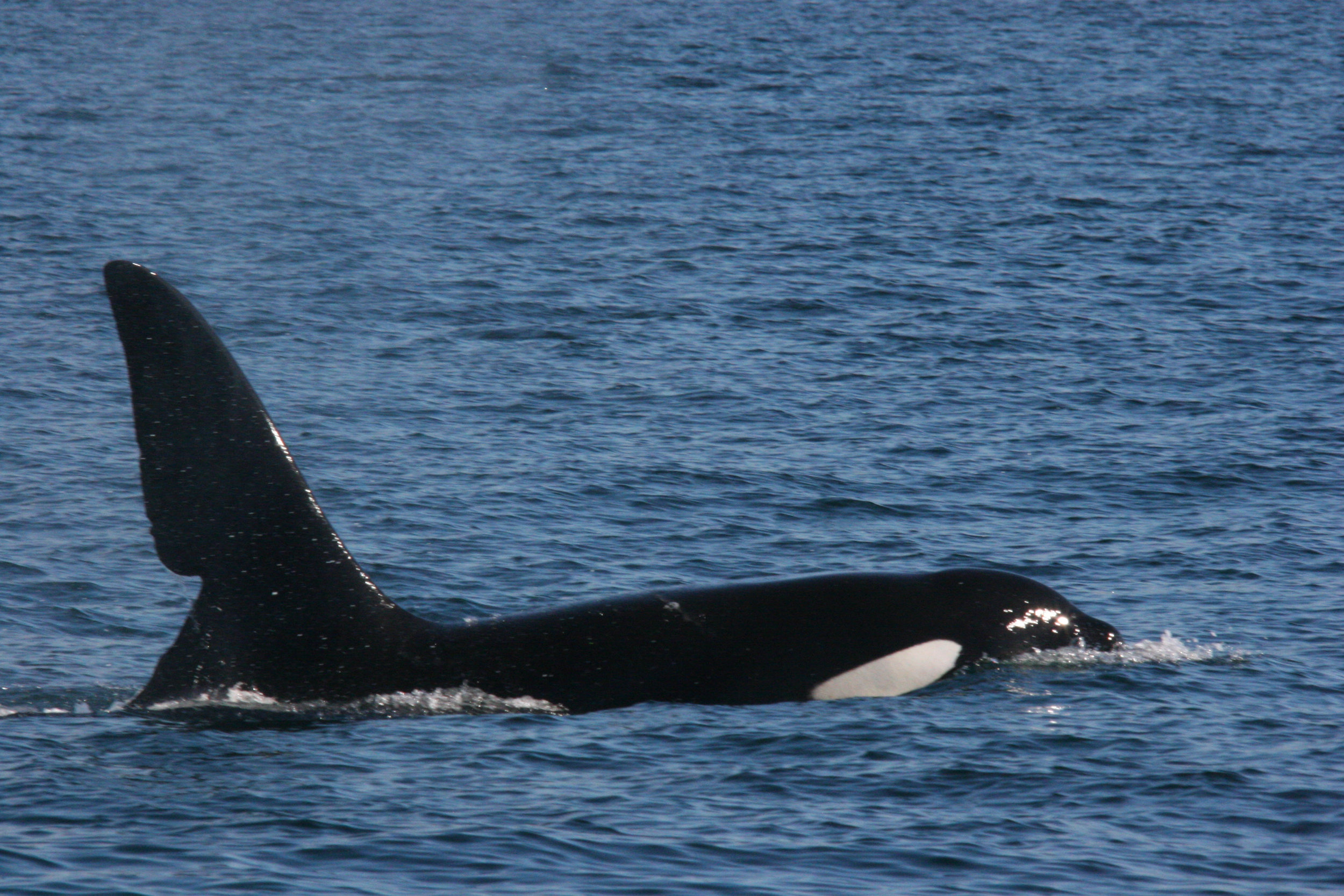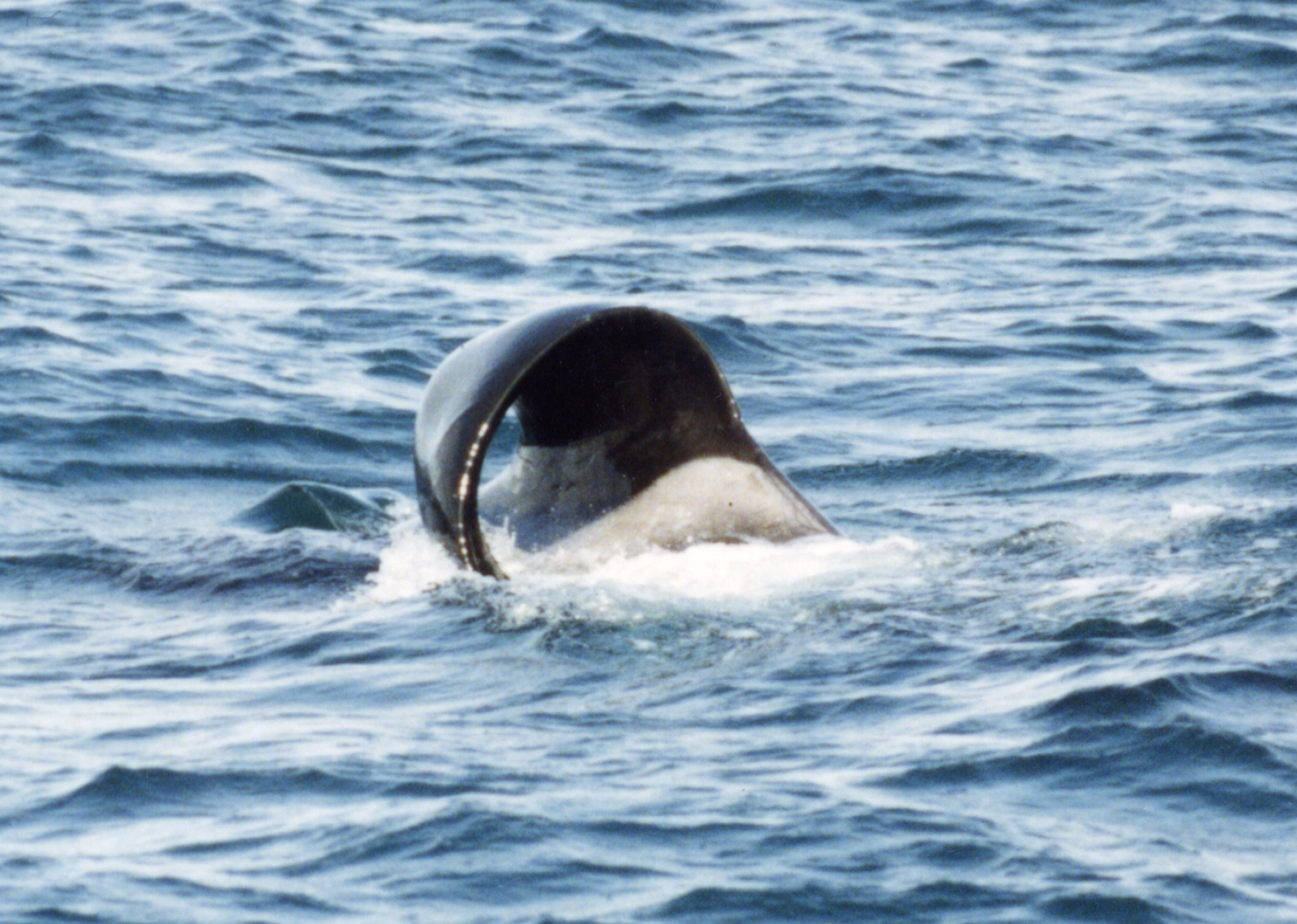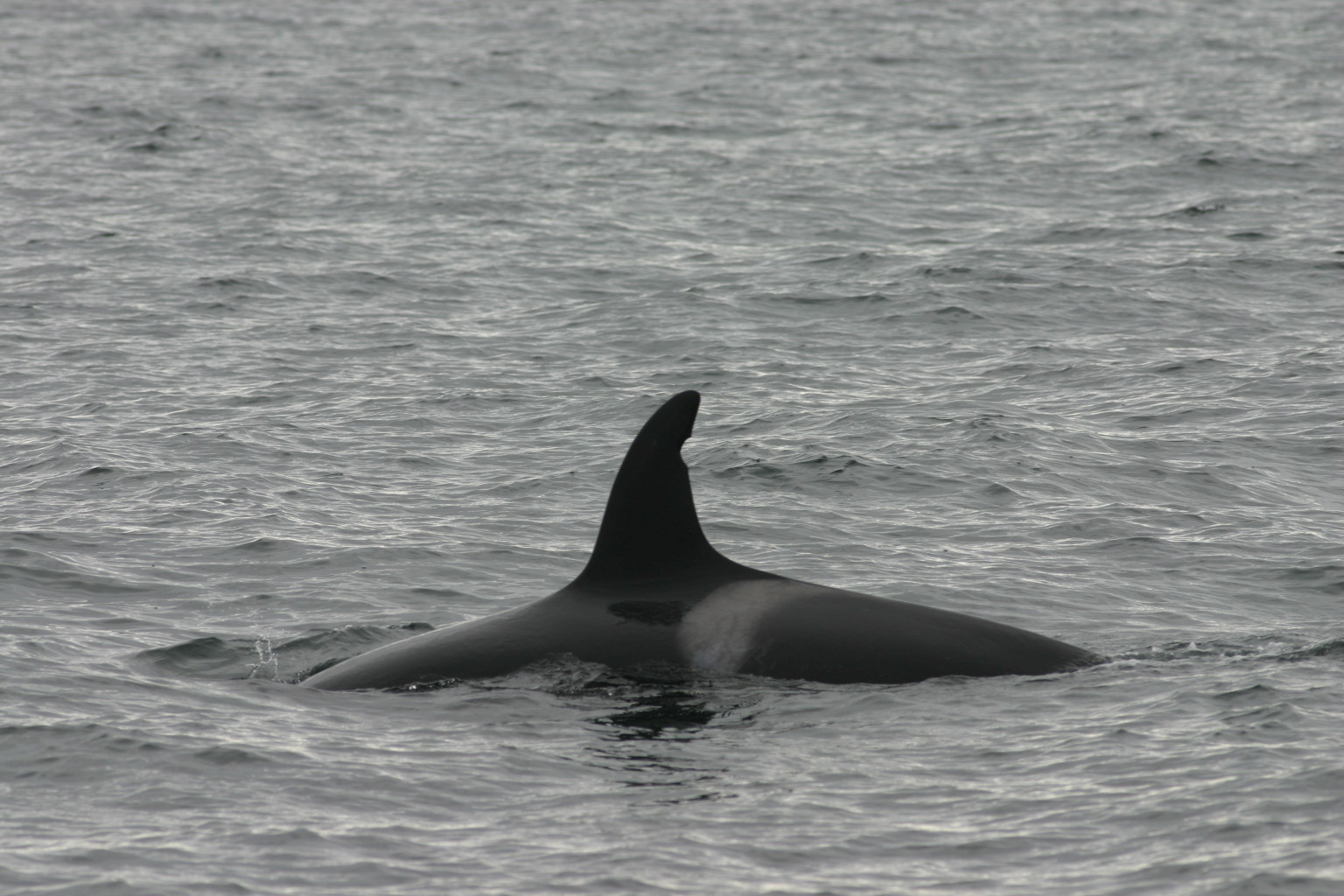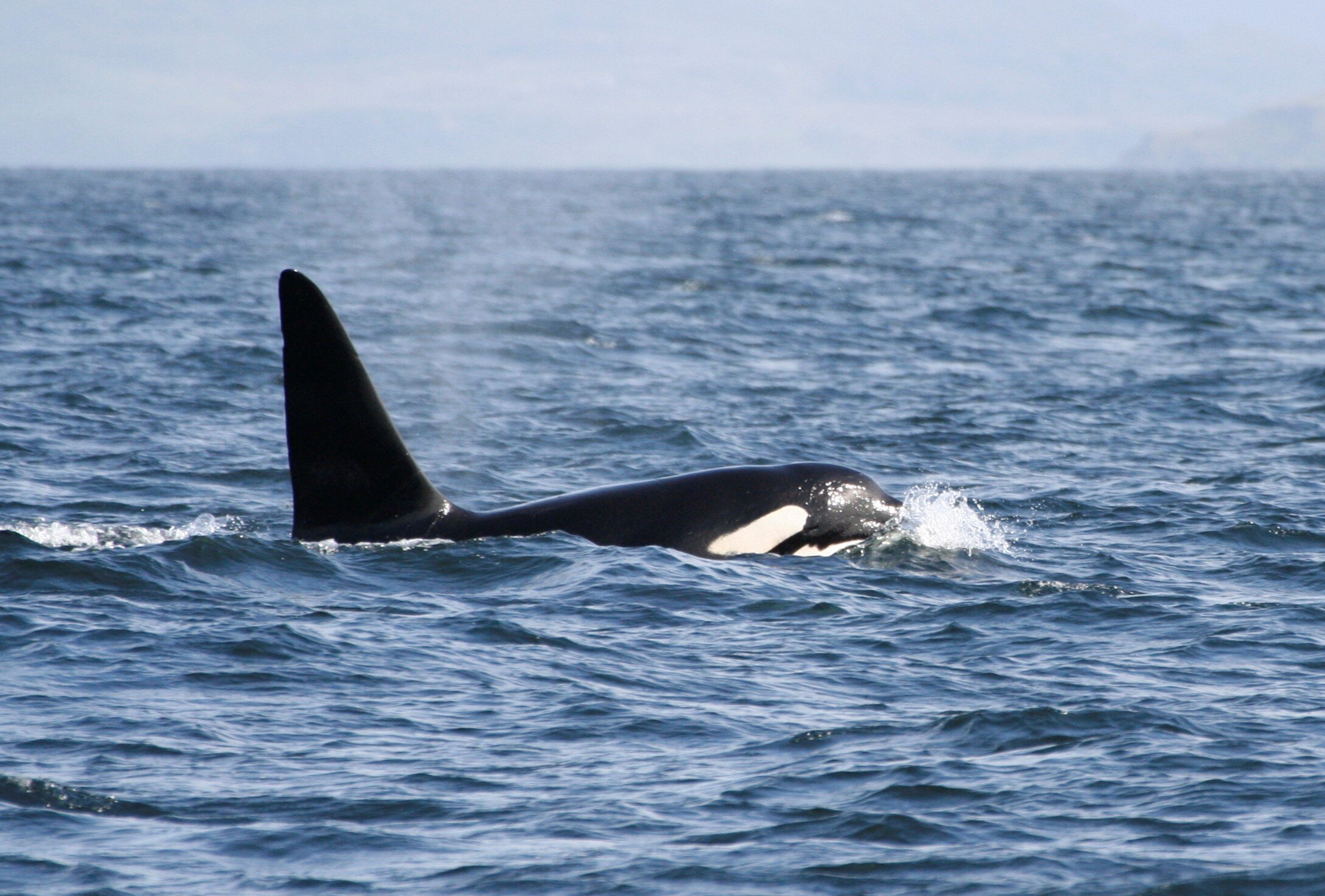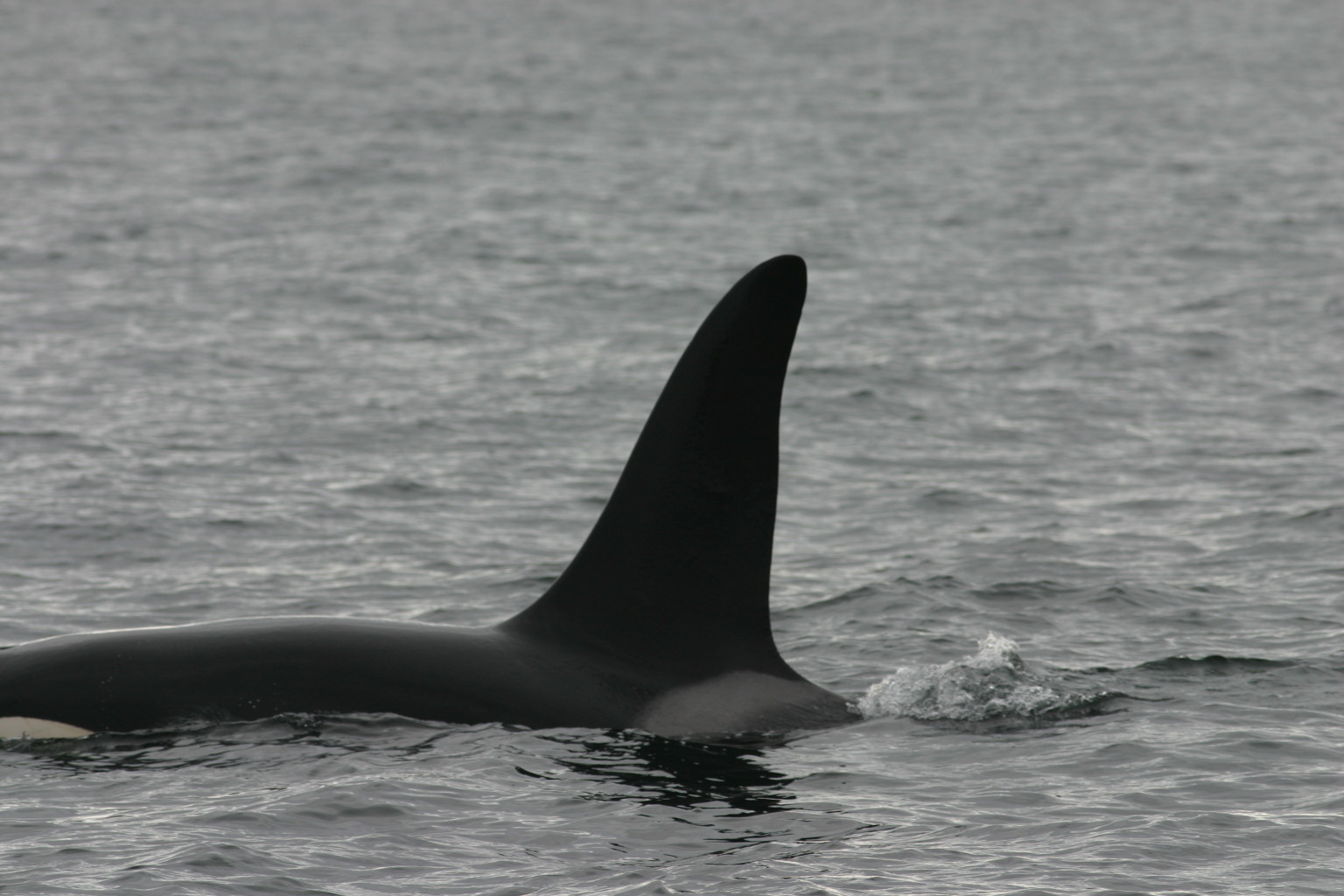west coast community photo-id catalogue
Numbering only eight individuals (four males and four females), members of the West Coast Community - recorded only in UK and Irish waters - can be distinguished from other groups of killer whales seen around Scotland by their unusual sloping eye patch and larger size. Each individual in the group is recognisable by the unique shape of their dorsal fin as well as the shape and coloration of their saddle patch. HWDT have been collating photographs and sightings of the West Coast Community since 1992.
These animals truly are a west coast community, with sightings recorded from the whole of the western seaboard of the UK and Ireland. One individual, John Coe, has also been spotted off the east coast of Scotland. Although the group is wide ranging, most sightings have been within the Hebrides. Some individuals have not been seen in recent years and there have been no calves observed since monitoring began in the 1990’s. Lulu, the ninth member of the group, died after becoming entangled and stranded on Tiree, in the Hebrides, in January 2016. Lulu’s death was tragic but it provided us with a unique insight into the threats facing this small and unique group.
Contaminant analysis of tissue taken from Lulu’s necropsy, carried out by the Scottish Marine Animal Stranding Scheme, showed that she had one of the highest levels of PCB burden ever recorded in the species - 100 times higher than the accepted threshold for PCB toxicity in marine mammals! High levels of PCBs cause poor health and infertility. Although she was sexually mature, Lulu‘s necropsy showed she had never been pregnant. This finding, linked with the fact that no calves have been recorded in the West Coast Community since monitoring began, suggests that this unique group of killer whales will become extinct in the coming years.
In recent years, only the two old males - John Coe and Aquarius - have been reported, prompting fears they are the last remaining members of this population. Tragically, this unique ecotype will go extinct from our waters in the coming years.


